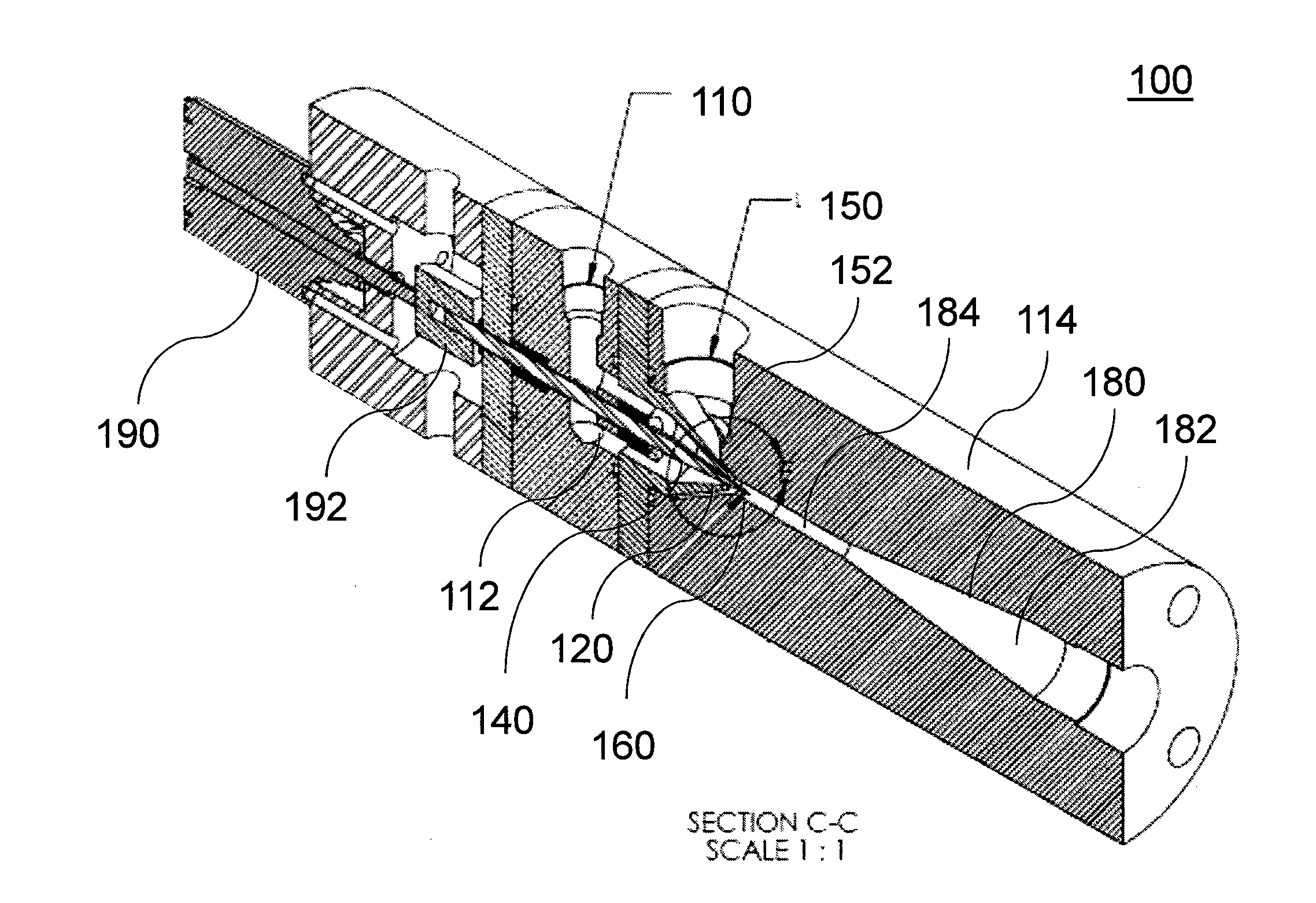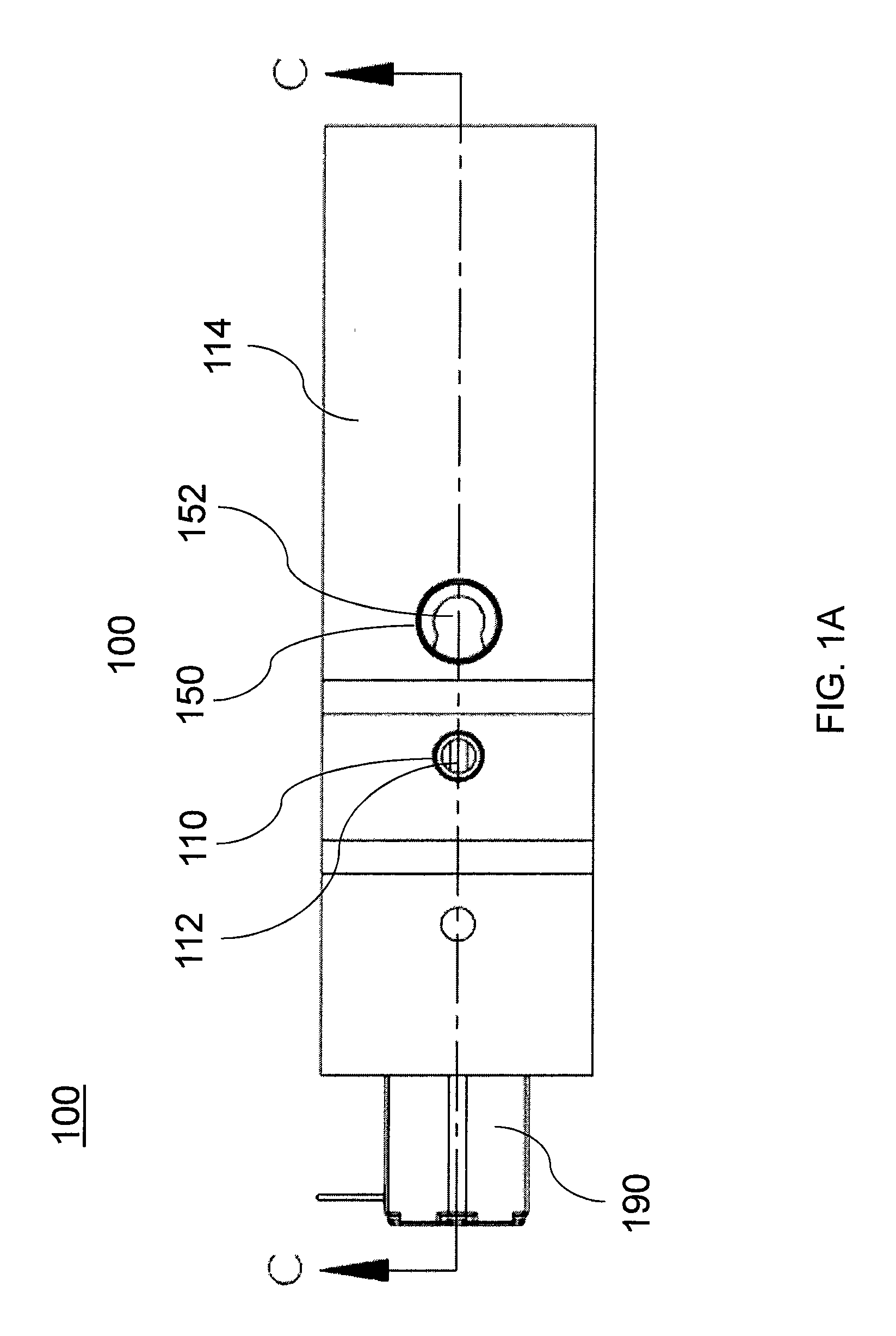Devices, systems, and methods for variable flow rate fuel ejection
- Summary
- Abstract
- Description
- Claims
- Application Information
AI Technical Summary
Benefits of technology
Problems solved by technology
Method used
Image
Examples
Embodiment Construction
[0017]The various aspects of the present invention relate generally to devices, systems, and methods for various flow rate ejectors. Embodiments of the invention include a device adapted to be inserted into a fluid circulation system and control the is flow rate of the fluid in the circulation system.
[0018]The devices, systems, and methods described herein are particularly suitable for use in recirculation of hydrogen gas in hydrogen fuel cells. The disclosed systems may be particularly suited for maintaining an optimal flow rate and pressure between the gas outlet and the gas inlet of a fuel cell. Additional details regarding the control of flow rate will be described in greater detail herein.
[0019]While the invention is described herein primarily with respect to hydrogen gas recirculation, it will be understood that the invention is not so limited. The disclosed embodiments may be usable for variable flow rate control of fluids in any suitable system.
[0020]As set forth above, aspe...
PUM
 Login to View More
Login to View More Abstract
Description
Claims
Application Information
 Login to View More
Login to View More - R&D
- Intellectual Property
- Life Sciences
- Materials
- Tech Scout
- Unparalleled Data Quality
- Higher Quality Content
- 60% Fewer Hallucinations
Browse by: Latest US Patents, China's latest patents, Technical Efficacy Thesaurus, Application Domain, Technology Topic, Popular Technical Reports.
© 2025 PatSnap. All rights reserved.Legal|Privacy policy|Modern Slavery Act Transparency Statement|Sitemap|About US| Contact US: help@patsnap.com



